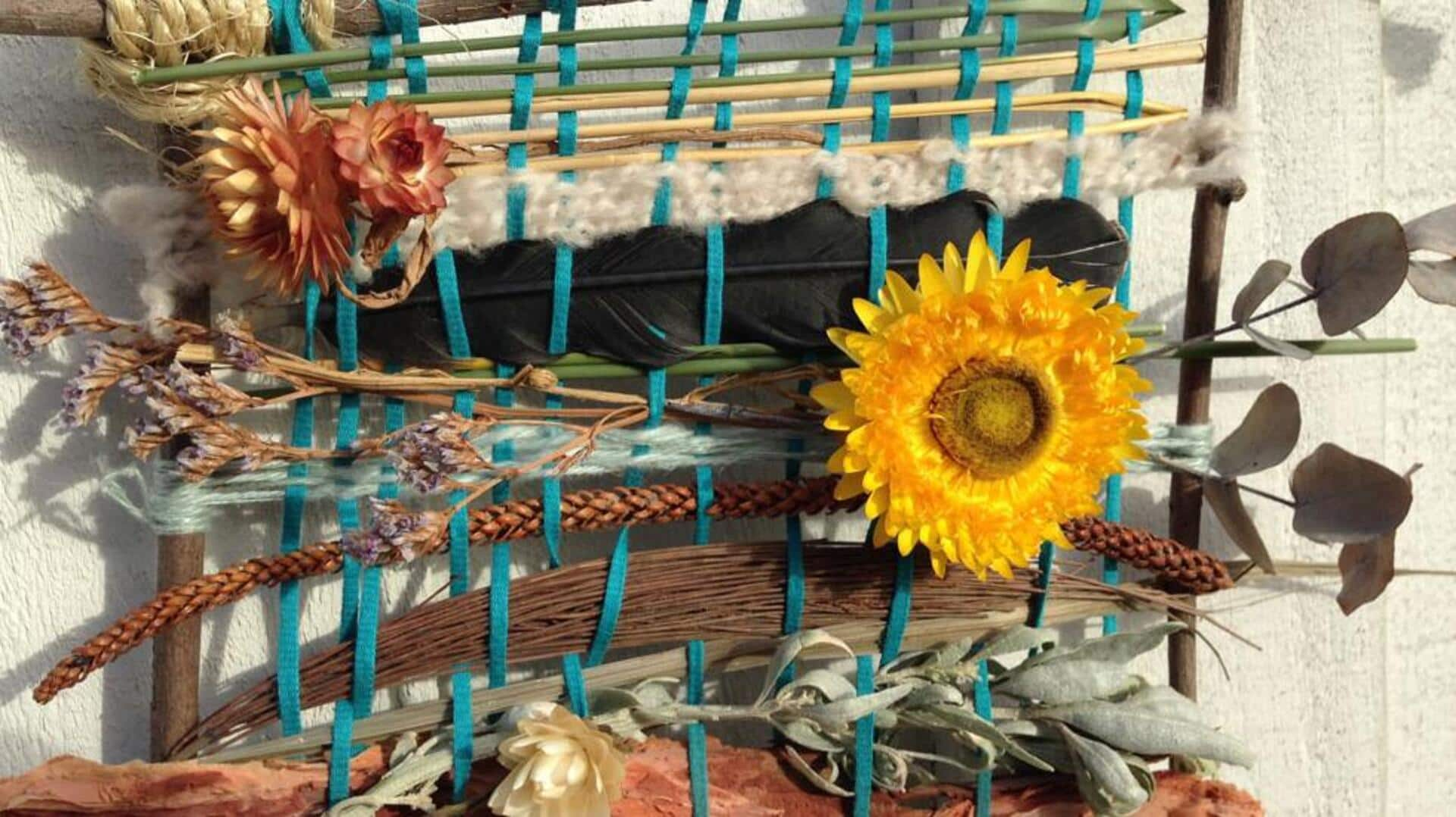
How to create stunning pieces using weaving loom artistry
What's the story
The art of weaving loom, an ancient textile production method dating back thousands of years, involves the interlacing of warp and weft threads at right angles to each other to create cloth.
This craft has evolved from primitive hand-operated looms to sophisticated digital machines, allowing for the production of intricate patterns and designs.
Beyond a craft, weaving is a meditative art form with infinite potential for creativity and self-expression.
Fundamentals
Understanding the basics of weaving
Before you delve into the world of weaving loom artistry, you need to grasp the essentials: warp and weft, types of looms, and weaving techniques.
The warp threads run vertically and are held in tension on the loom. The weft threads are woven horizontally through the warp.
Frame looms for small projects and beginners, table looms for portability and complexity, and floor looms for large projects and advanced skills.
Materials
Choosing your materials wisely
The materials you choose can significantly impact the outcome of your weaving project.
Different yarns, such as cotton, wool, silk, and synthetics, provide unique textures.
For beginners, cotton or acrylic is recommended due to its cost-effectiveness and ease of use.
Selecting the appropriate yarn weight and color is crucial for creating the desired effects in your pieces.
Patterns
Exploring patterns and techniques
One of the most exciting parts of weaving is discovering new patterns and techniques to bring complexity and beauty to your work.
Different weaving techniques like tabby weave (plain weave), twill weave (diagonal ribbing), or herringbone (a variation of twill) offer unique textures and visual appeal.
Playing with color combinations within these patterns adds another layer of creativity and fun.
Workspace
Setting up your workspace
A dedicated workspace is essential for productive weaving.
Make sure your workspace is brightly lit to prevent eye strain when working on intricate patterns.
Keep your tools and materials organized and within easy reach to save time and maintain focus.
If possible, invest in a comfortable, ergonomic chair. Adjust the height to align with your loom for optimal comfort during extended weaving periods.
Getting started
Tips for beginners
If you're a beginner at weaving loom, starting small will help you build confidence and skills for more complex projects later on.
Try making coasters or bookmarks on a small frame loom before moving onto scarves or wall hangings on a larger table or floor loom.
Check out tutorials on YouTube or sign up for a local workshop to learn the basics and get started on your weaving journey.